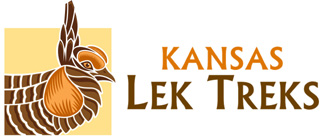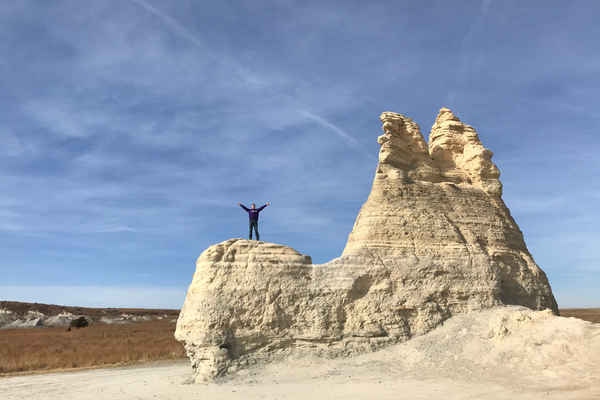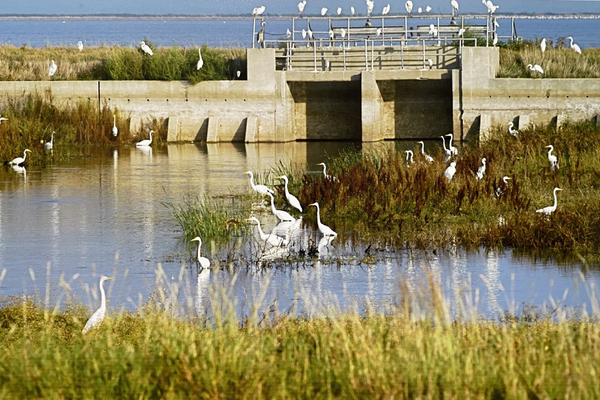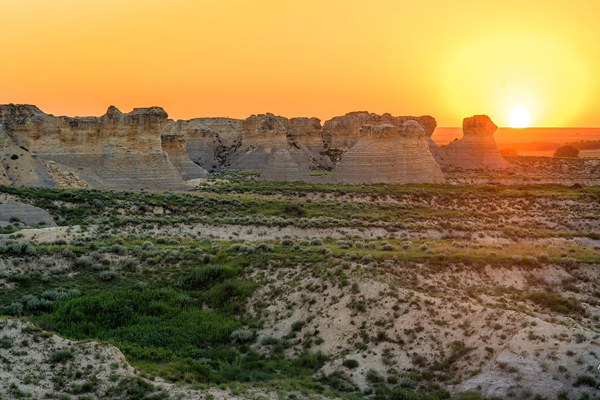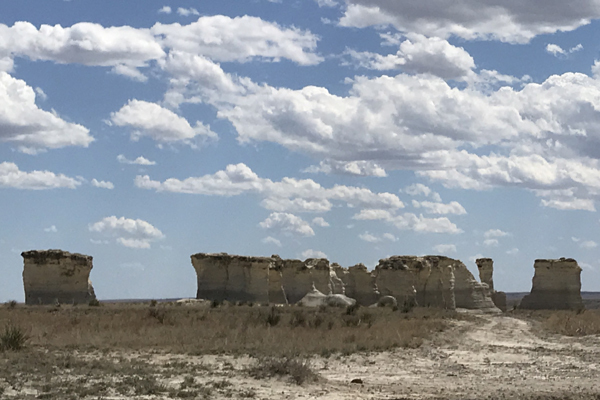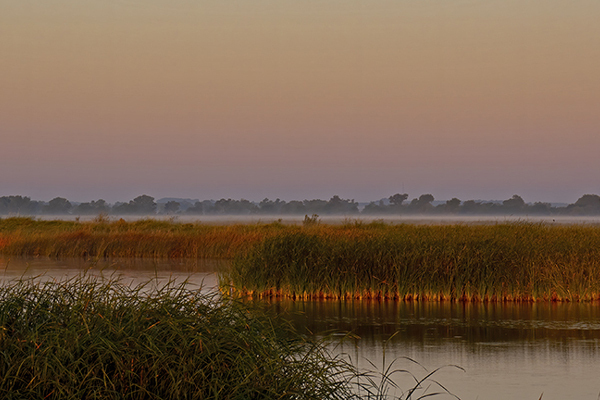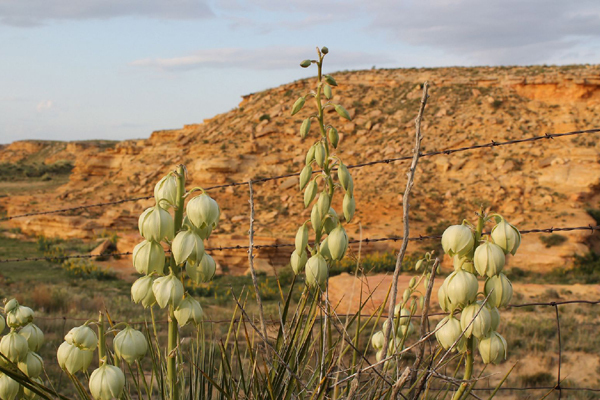Field Trips
All field trips are 8:30am-5pm. Lunch and snacks are provided.
Geology Wonders: Castle Rock and Monument Rocks (Offered Saturday)
Explore two unique geological formations which the Kansas Sampler Foundation selected as one of the Eight Wonders of Kansas. Monument Rocks Natural Area is a National Natural Landmark. These chalk pillars and arches rise 70 feet above an otherwise flat landscape. Castle Rock is another chalk monolith, but there are also badlands with chalk and shale formations to explore. The trip will conclude at Little Jerusalem Badlands State Park. At 300 acres, Little Jerusalem is the largest expanse of true chalk badlands in the state, an extensive terrain of highly eroded, steep-sided canyons and draws, gullies and ravines. This is an opportunity to hike the rim of the badlands and see the plants and animals, like chalk lilies and ferruginous hawks, that live in this forbidding semi-arid environment. Birds could include Say’s Phoebe, Rock Wren, and various hawks.
Guide: Rex Buchanan
Prairie-Chicken Management and Shortgrass Specialties at Smoky Valley Ranch and Little Jerusalem Badlands (Offered Friday)
Smoky Valley Ranch combines a working cattle ranch with thriving wildlife populations. It is home to lesser prairie-chicken, a bison herd and pronghorn. Smoky Valley Ranch is managed by The Nature Conservancy and has limited public access, so it is a real treat to get this behind-the-scenes tour. Little Jerusalem Badlands, also managed by The Nature Conservancy, is an excellent example of Niobrara rock formations and a good place to see Rock Wrens. Matt Bain, Western Kansas Conservation Manager, will talk about the unique landscape and how it is managed to promote Lesser Prairie-Chicken and Prairie Dog Conservation. Target birds to see on this trip include Burrowing Owl, Ferruginous Hawk, Say’s Phoebe, and Rock Wren.
Guide: Matt Bain
Globally Important Wetlands Tour (Offered Friday and Saturday)
Kansas hosts two wetlands which are a globally important stopover for thousands of migratory shorebirds and waterfowl: Cheyenne Bottoms and Quivira National Wildlife Refuge. Both sites support threatened or endangered birds during nesting, staging or wintering periods. Cheyenne Bottoms is one of the top migratory shorebird staging areas in the United States, with 10 species of shorebirds having a significant percentage of their populations stopping at Cheyenne Bottoms in a given year. Cheyenne Bottoms also provides important staging and nesting areas for waterfowl species including Mallards and Blue-winged Teal. Cheyenne Bottoms is made up of KS Department of Wildlife and Parks’ Cheyenne Bottoms Wildlife Area (19,857 acres) and The Nature Conservancy’s Cheyenne Bottoms Preserve (>8,500 acres). Quivira National Wildlife Refuge represents an excellent example of an inland salt marsh, a rare habitat type in the USA’s midwestern region. A diversity of habitat is provided by native grass uplands, fresh and saltwater marshes, and salt flats. Quivira NWR is managed by the U.S. Fish & Wildlife Service in the National Wildlife Refuge System. Even though Quivira and Cheyenne Bottoms are relatively close to each other (20 miles as the bird flies), sporadic prairie thunderstorms create a situation such that when one is dry or flooded the other is often suitable for use by shorebirds. Currently, western Kansas is experiencing a prolonged drought. This tour will bring you to the best shorebird and waterbird habitat that is available at the time of the tour - either Cheyenne Bottoms or Quivira. During the tour, we hope to see ducks including Cinnamon Teal, grebes, Black-necked Stilt, American Avocet, dozens of sandpipers including Baird's Sandpiper and dowitchers, Franklin's Gull, White-faced Ibis, and Yellow-headed Blackbird.
Guide: Mike Rader
